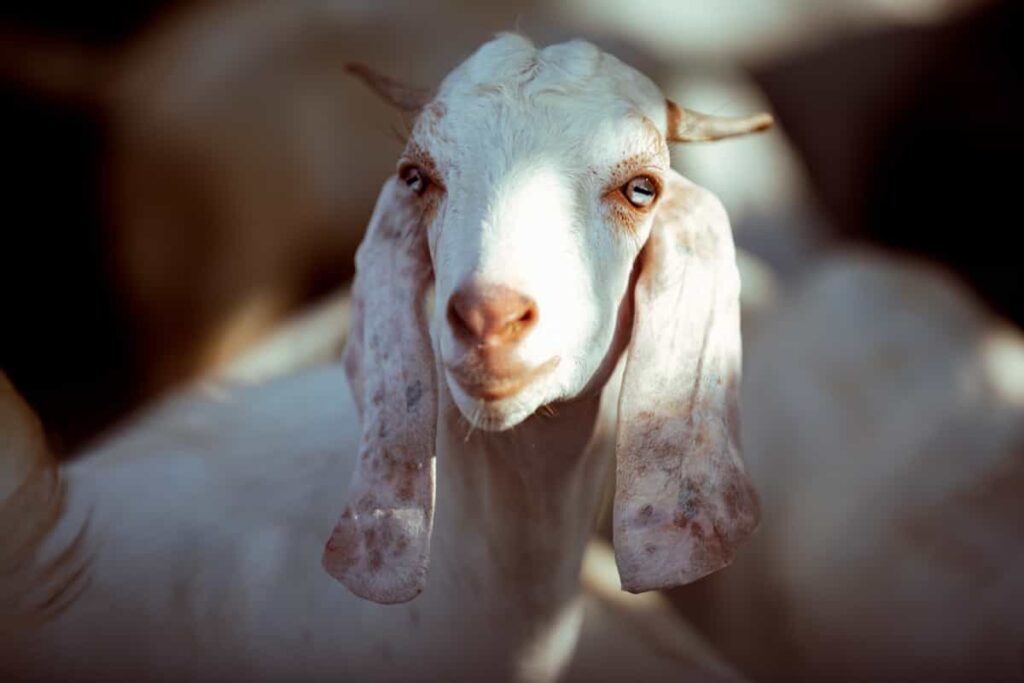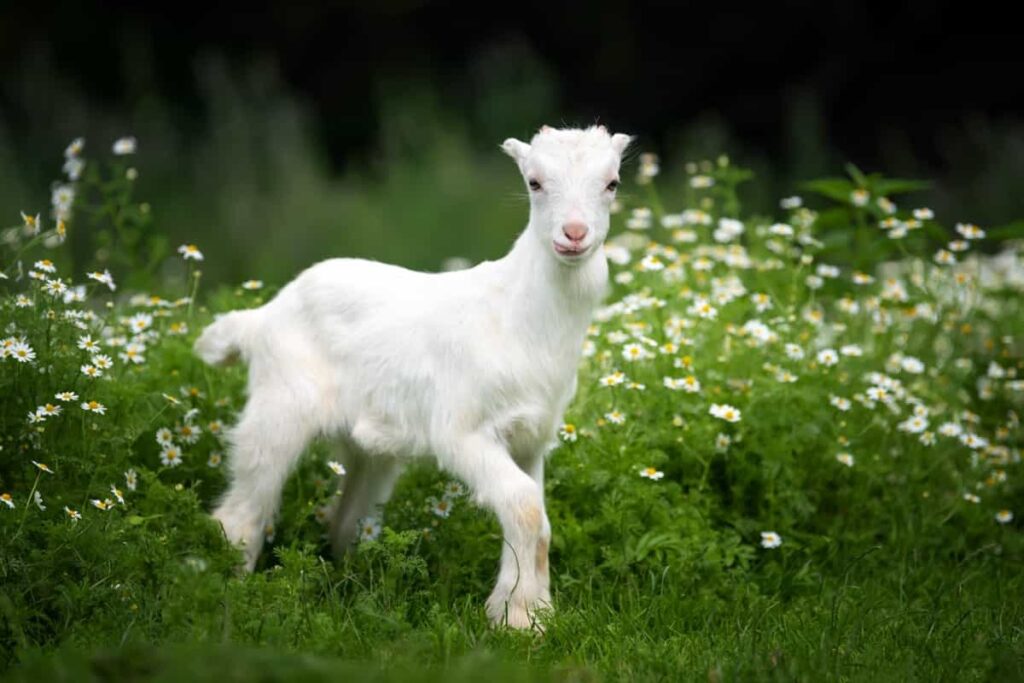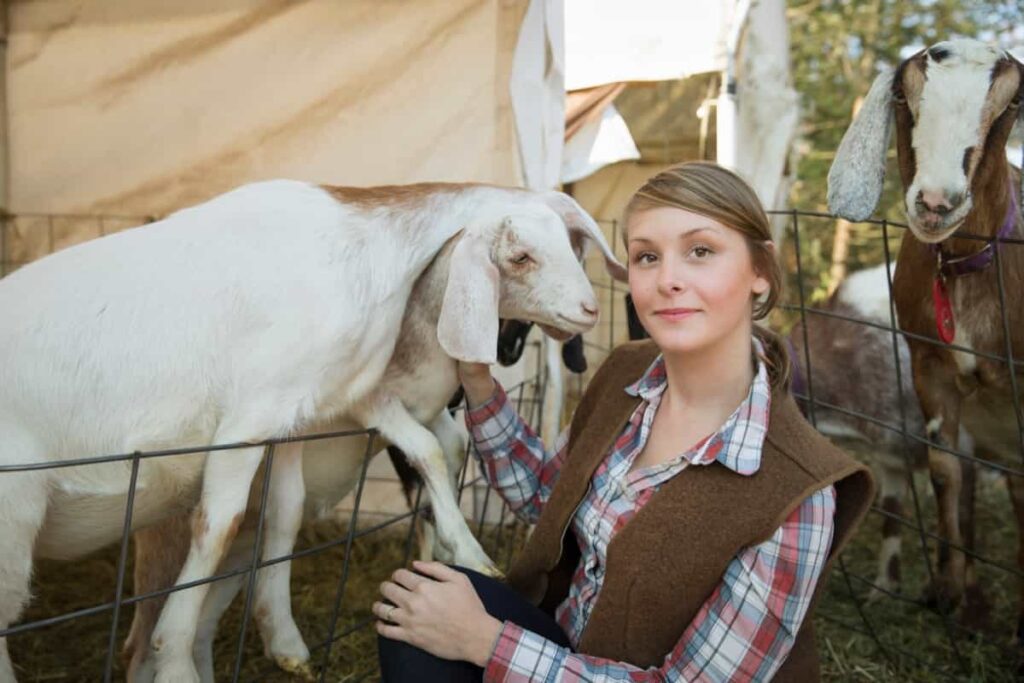Tellicherry goats stand out for their unique characteristics and potential for meat and milk production. These goats, also known as Malabari goats, are bred in the beautiful district of Malabar in Kerala. Furthermore, these goats have excellent feed conversion efficiency. They can efficiently convert low-quality fodder into quality meat or milk products, minimizing feed costs and maximizing profitability.

Tellicherry Goat Farming
Choose an Ideal Location for Your Goat Farm
- Selecting the right location is crucial for the success of your venture. The ideal location for your goat farm should have certain characteristics that will ensure the health and well-being of your goats.
- Tellicherry goats thrive in warm climates with moderate humidity. They are not suited for extremely cold or rainy regions. So, look for a location with a tropical or subtropical climate that provides ample sunshine and warmth throughout most of the year.
- Next, assess the availability of grazing land. Tellicherry goats are primarily grazers and need access to fresh pasture for their dietary needs. Look for abundant greenery and vegetation where your goats can roam freely and feed on natural grasses.
- Additionally, ensure that there is a reliable source of clean water nearby. Goats require plenty of water to stay hydrated and healthy. Access to a freshwater supply such as a pond, river, or well is essential.
- If you plan on selling goat meat or dairy products commercially, choose a location close to potential buyers or markets where you can easily transport your products without incurring high transportation costs.
Characteristics of Tellicherry Goats
- These goats are primarily bred for their meat but produce milk. They have distinctive characteristics that make them stand out among other goat breeds.
- These goats are adaptable to various climates and can thrive in hot and humid conditions and cooler environments. They have a strong immune system, making them resistant to many common diseases.
- Moreover, Tellicherry goats exhibit good fertility rates and have a high twinning percentage compared to other goat breeds. This means they give birth to multiple kids during each birthing cycle.
- In addition to these physical attributes, Tellicherry goats are known for their docile nature and friendly temperament towards humans. This makes them easier to handle and manage on the farm.
- The unique characteristics of Tellicherry goats make them a valuable choice for farmers engaged in goat farming for meat production or even those looking for small-scale milk production options.
Tellicherry Goat Milk Production
Tellicherry goats have become popular among farmers due to their high milk yield of approximately 2.5 liters daily. While most of the milk is typically used to nourish their adorable kids, it still presents an opportunity for additional income through dairy products.
Tellicherry Goat Weight
- One notable feature of Tellicherry goats is their weight. Females weigh an average of 30.68 kg, while males weigh around 41.20 kg. Their coats come in different colors, such as white, black, adding to their visual appeal.
- In addition to their weight variations, Tellicherry goats come in different coat colors, including white, black, or piebald. These distinct colors add beauty and diversity to the breed. Whether you prefer the elegance of a pure white coat or the striking contrast of black and white patterns, there is a Tellicherry goat for every aesthetic preference.
In case you missed it: Exploring the Art of Goat Farming in Kashmir Valley

Facts about Tellicherry Goats
| Breed Name | Tellicherry goat |
| Other Name | Thalassery goat, Thalacheri, Malabari |
| Country/Place of Origin | India |
| Breed Purpose | Milk and Meat |
| Breed Size | Medium |
| Weight | Buck(Male) 41.20 kgDoe(Female) 30.68 kg |
| Milk Yield | 2 liters a day |
| Climate Tolerance | All Climates |
What are the Features of Tellicherry Goat?
Starting a Tellicherry goat farm requires careful planning and consideration of factors such as location and proper care practices. It is crucial to provide them with a suitable environment that includes ample space for grazing and shelter from harsh weather conditions.
These goats thrive well in diverse climatic conditions and have good adaptability traits, which make them suitable for different geographical regions across India. The features of a Tellicherry goat make it an ideal choice for farmers looking to venture into meat production or dabble in small-scale dairy farming alongside other livestock activities on their farms.
Feeding Tips for Tellicherry Goats
- A well-balanced diet is important for their overall health and productivity. These goats are known for their appetite, so providing them with nutritious food is crucial.
- A good starting point is fresh green fodder. You can feed them grass, leaves, and other plant materials found on your farm or nearby areas. Make sure to avoid poisonous plants that may harm your goats.
- In addition to green fodder, you should provide them with dry roughage like hay or straw. This will help in digestion and prevent any digestive issues.
- Water should always be available for the goats throughout the day.
- Feeding your Tellicherry goats twice daily – morning and evening – will help maintain their energy levels and keep them healthy.
Health Care and Vaccination Schedule of Tellicherry Goats
- Taking care of the health of your Tellicherry goats is crucial for their well-being and productivity. Regular health check-ups, proper nutrition, and timely vaccinations are essential to ensure a disease-free environment on your farm.
- Maintaining hygiene in the goat shed is vital to prevent the spread of infections. Cleanliness and regular disinfection will help keep diseases at bay. Proper ventilation and adequate space for each goat are also important factors.
- Vaccinations play a significant role in preventing various diseases that can affect Tellicherry goats. Some common vaccines include those against Peste des Petits Ruminants (PPR), Foot-and-mouth disease (FMD), Sheep pox, Goat pox, etc. Follow a vaccination schedule recommended by experts or consult with a veterinarian for guidance.
- In addition to regular healthcare practices, observing your Tellicherry goats closely for signs of illness or discomfort is crucial. Promptly address issues such as diarrhea, respiratory problems, loss of appetite, or abnormal behavior by seeking professional veterinary assistance.
- Remember that maintaining good overall health will benefit your goats and contribute to higher productivity and profitability in your Tellicherry goat farming venture.
In case you missed it: Jakhrana Goat Farming: A Comprehensive Guide

Conclusion
Tellicherry goats have a high reproduction rate, which means more offspring and potentially higher profits for farmers. This breed has good fertility rates and often gives birth to multiple kids per pregnancy, allowing farmers to expand their herd quickly. In addition to being valuable meat sources, Tellicherry goats also produce milk.
Note: The images presented in this post are intended solely for representation purposes. The images are meant to serve as visual aids and should not be relied upon as accurate representations of their real-life counterparts.
- Goat Milking Practices and Equipment: A Beginner’s Guide
- Goat Farming for Fiber: Producing Mohair and Cashmere
- Maximizing Goat Milk Production: Tips for Dairy Goat Farmers
- Goat Farming as a Family Business: Strategies for Success
- Profitable Kenya Goat Breeds for Commercial Dairy and Meat Business
- Unlock the Secrets of Oberhasli Goat: Discover Raising and Management Practices
- Ultimate Guide to Myotonic Goats: Explore Profile to Raising
- Unlock the Secrets of Rove Goat: Discover Management Practices
- Ultimate Guide to Malwa Goat: Explore from Origin to Management Practices